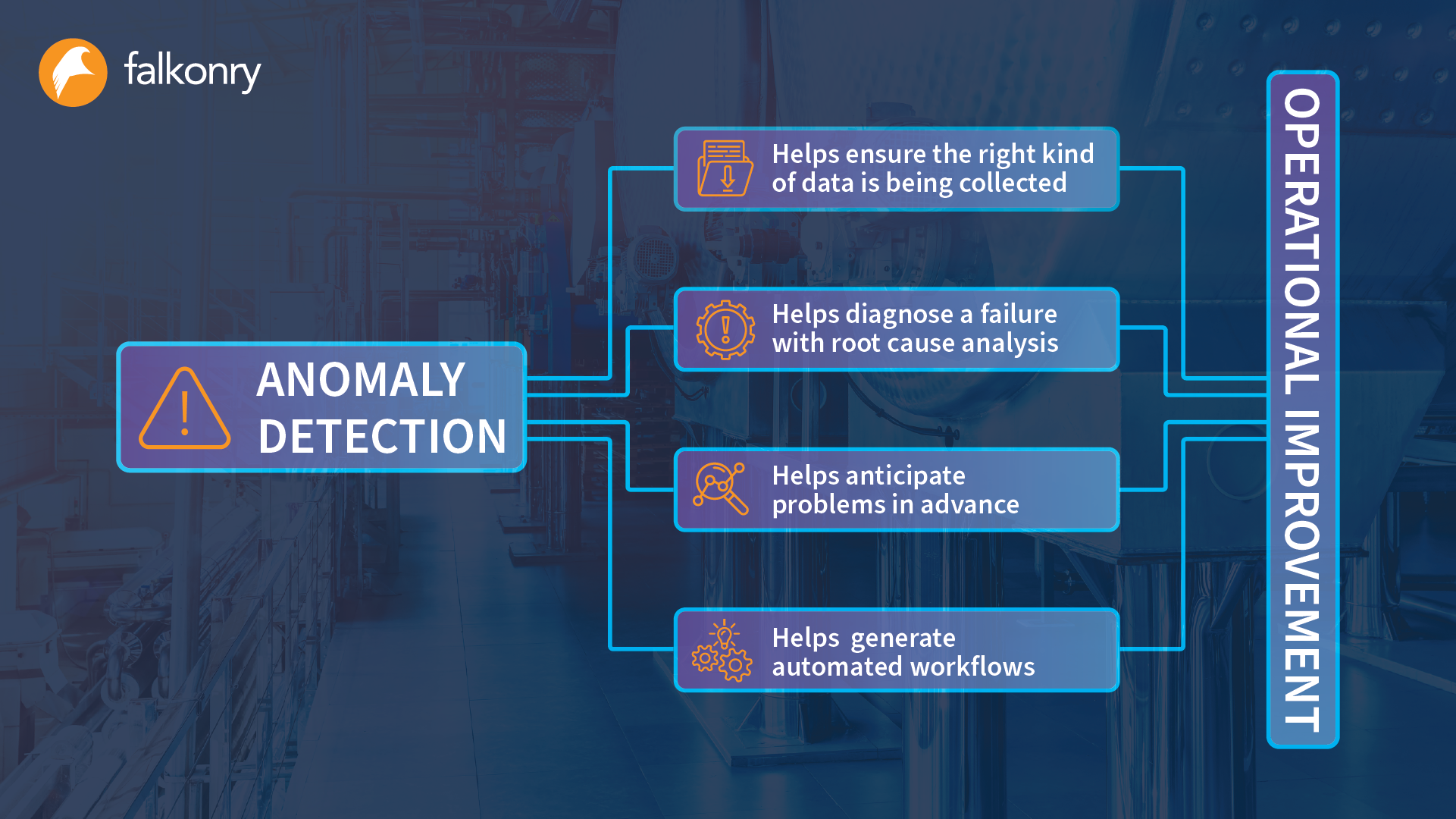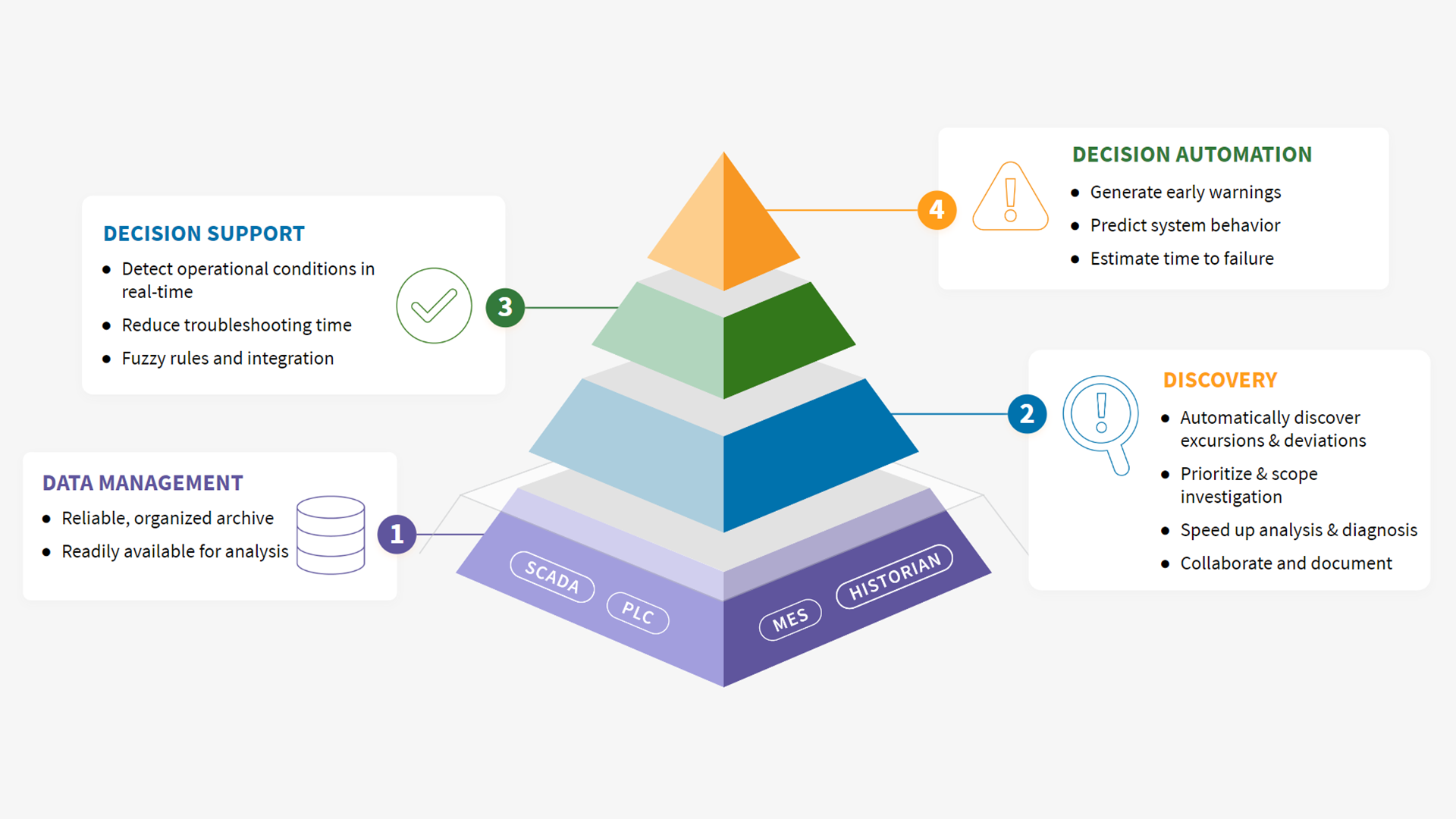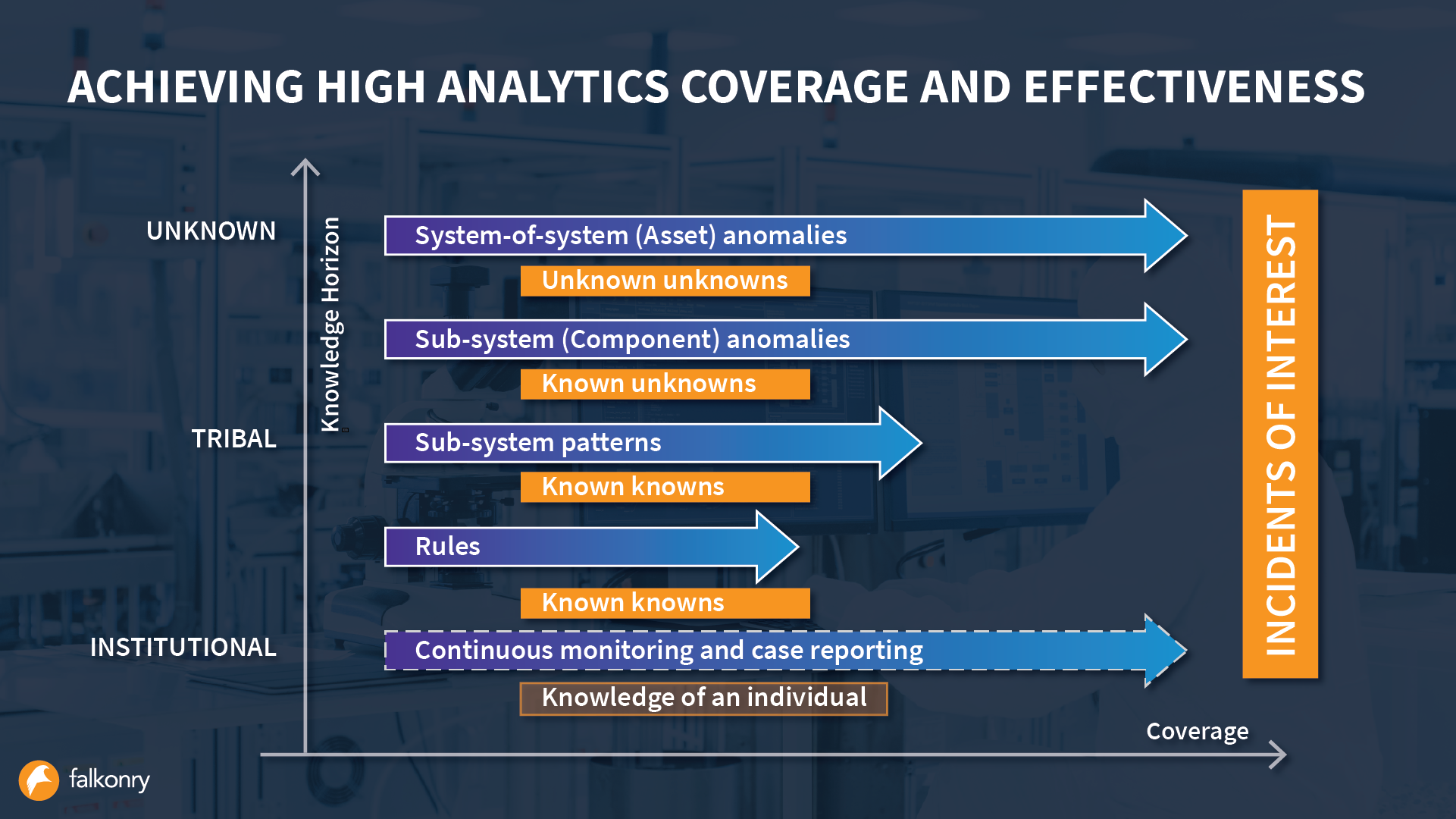Data-Driven Operations
In the context of manufacturing, data-driven operations (also known as smart operations) constitutes a transformative approach toward achieving operational excellence through advanced anomaly detection techniques. This concept revolves around the idea that data, when intelligently collected, processed, and analyzed, becomes a valuable asset that informs strategic decisions, fuels innovation, and facilitates proactive actions.
What is data-driven?
Being data-driven involves leveraging empirical evidence and real-time insights, including anomaly detection, to inform decision-making and actions. It encompasses harnessing the full potential of data to steer operational decisions. It involves the systematic collection of data from various sources, including sensors, machines, and processes, to gain a comprehensive understanding of operations. Data-driven automation is the next generation of automation and it will be built on time series AI underpinned by anomaly detection.
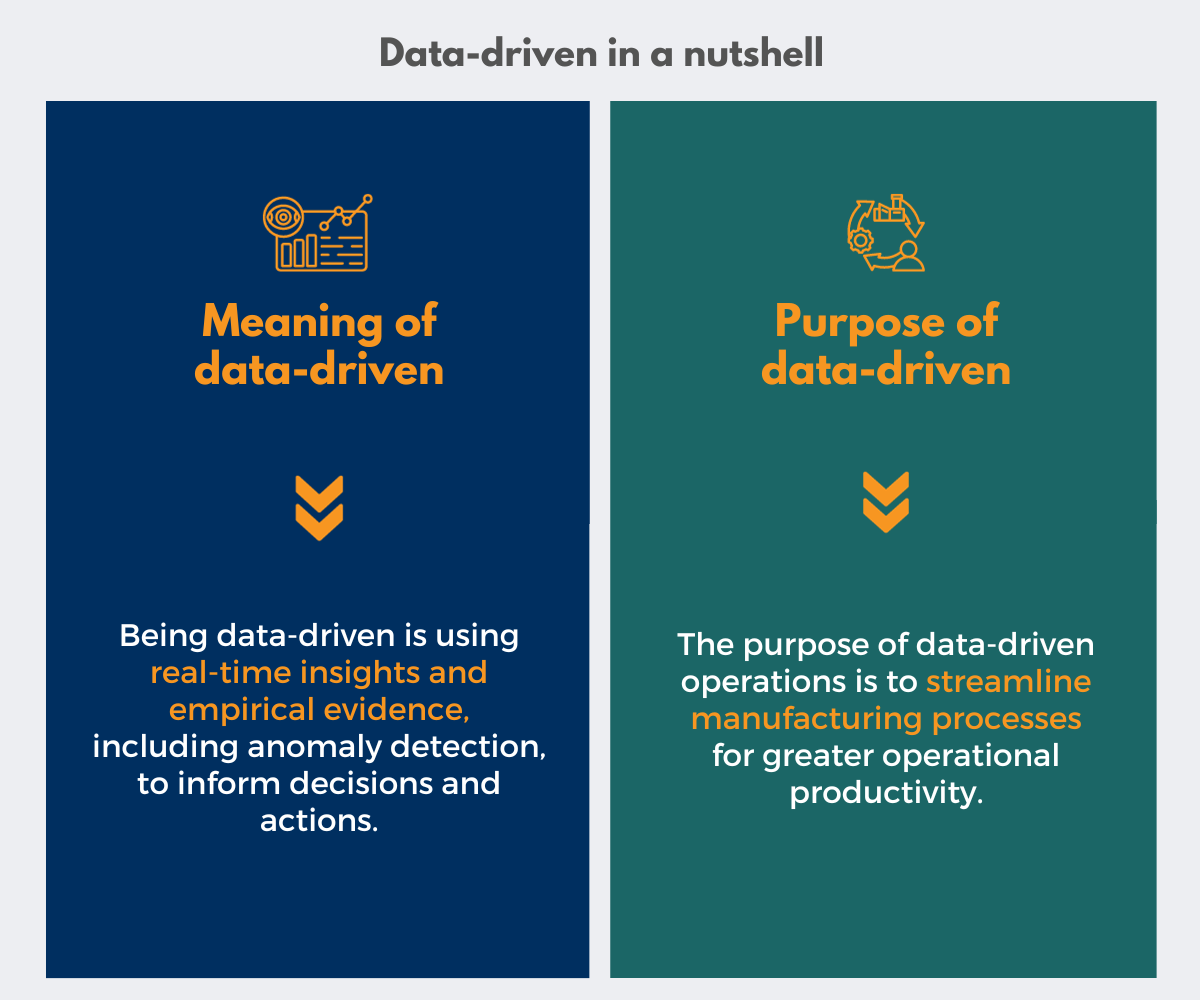
What is the purpose of data-driven operations?
The purpose of data-driven operations is to streamline manufacturing processes in order to achieve unprecedented levels of operational productivity. Efficient exploitation of granular operations data is pivotal in outperforming competitors in today’s talent-scarce industrial landscape. Therefore, embracing data-driven operations is imperative to gain a competitive edge.
Data driven vs Event driven
Data-driven and event-driven approaches are distinct methodologies in managing and utilizing data. Data-driven operations rely on past data, real-time insights, and anomaly detection to inform decisions. This approach involves comprehensive data collection from various sources, enabling a holistic understanding of operations. On the contrary, event-driven operations prioritize instantaneous responses triggered by specific events. While data-driven operations focus on the analysis and utilization of data, event-driven methods emphasize immediate reactions to predefined occurrences. A third approach based on rules is emerging that integrates the best parts of both methodologies. It aims to apply a layer of proactive data-driven insights to simple threshold-based monitoring systems, providing a more sophisticated system to alert plant personnel of events of interest without inducing alarm fatigue.

What is data-driven decision making?
Data-driven decision-making involves basing strategic choices on empirical evidence and comprehensive data analysis rather than intuition or gut feeling. It hinges on leveraging data insights, anomaly detection, and real-time information to steer decision-making processes. This method empowers organizations to make informed, objective decisions rooted in statistical evidence and trends extracted from vast datasets. Data-driven decision-making enhances accuracy, minimizes biases, and facilitates more predictable outcomes by relying on factual information rather than subjective judgment.
Data driven vs Intuition-based decision making
Data-driven decision-making differs fundamentally from intuition-based decision-making. While intuition relies on gut feelings, past experiences, or personal judgment, data-driven decision-making prioritizes empirical evidence and statistical analysis. Intuition-based decision-making might be prone to biases or subjective interpretations, whereas data-driven approaches emphasize objectivity and evidence-based conclusions. Organizations embracing data-driven methods tend to achieve more consistent and informed decisions by grounding choices in quantifiable data and factual evidence.
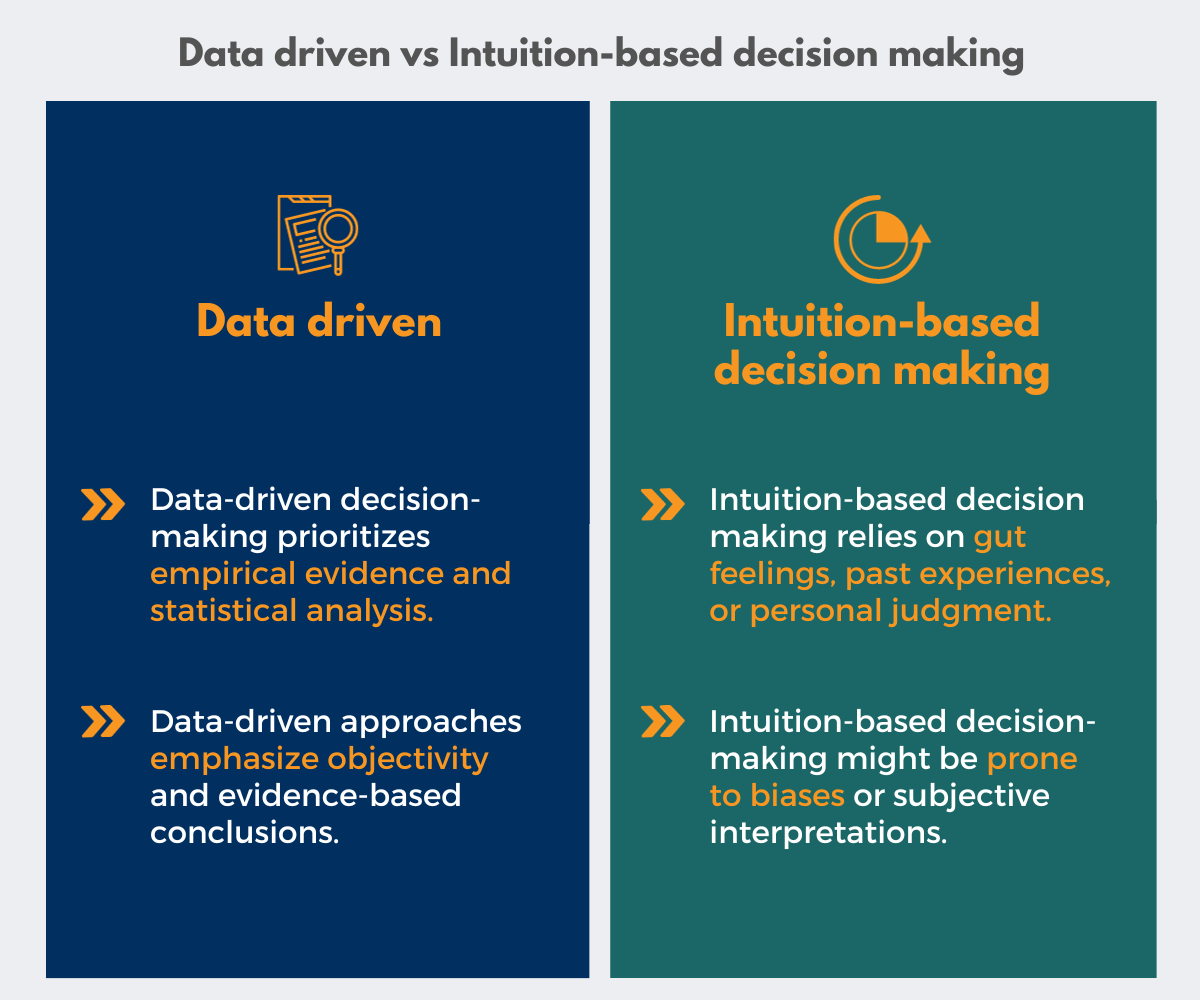
What is data-driven manufacturing
Data-driven manufacturing harnesses data analytics, machine learning, and anomaly detection techniques to optimize manufacturing processes. It involves utilizing data from machines, sensors, and production lines to drive operational improvements, predict maintenance needs, and enhance overall efficiency. Data-driven manufacturing facilitates predictive and prescriptive insights derived from comprehensive data analysis. By leveraging real-time data and AI-driven analytics, manufacturers can proactively address issues, reduce downtime, optimize resources, and deliver higher-quality products, ultimately driving growth and competitiveness.
